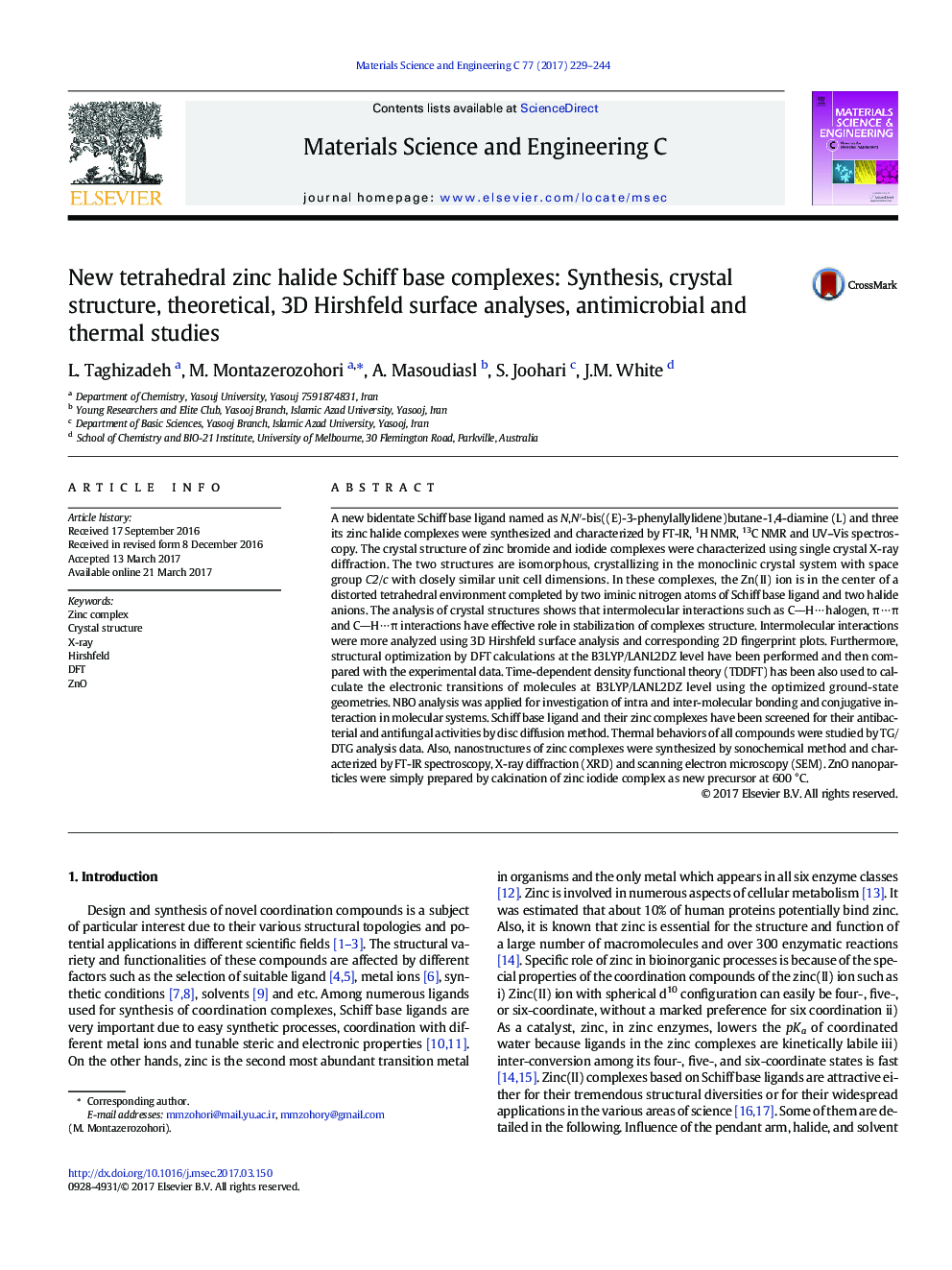| کد مقاله | کد نشریه | سال انتشار | مقاله انگلیسی | نسخه تمام متن |
|---|---|---|---|---|
| 5434519 | 1509144 | 2017 | 16 صفحه PDF | دانلود رایگان |

• Some new zinc halide Schiff base complexes were synthesized as bulk and nanostructure forms.
• Crystal structures of two complexes showed a distorted tetrahedral geometry for them.
• Intermolecular interactions of the complexes were studied by Hirshfeld and 2D fingerprint plots.
• Compounds showed acceptable antimicrobial activity against some microorganism.
• Zinc iodide complex was used for preparation of nano-structure zinc oxide.
A new bidentate Schiff base ligand named as N,N′-bis((E)-3-phenylallylidene)butane-1,4-diamine (L) and three its zinc halide complexes were synthesized and characterized by FT-IR, 1H NMR, 13C NMR and UV–Vis spectroscopy. The crystal structure of zinc bromide and iodide complexes were characterized using single crystal X-ray diffraction. The two structures are isomorphous, crystallizing in the monoclinic crystal system with space group C2/c with closely similar unit cell dimensions. In these complexes, the Zn(II) ion is in the center of a distorted tetrahedral environment completed by two iminic nitrogen atoms of Schiff base ligand and two halide anions. The analysis of crystal structures shows that intermolecular interactions such as CH ⋯ halogen, π ⋯ π and CH ⋯ π interactions have effective role in stabilization of complexes structure. Intermolecular interactions were more analyzed using 3D Hirshfeld surface analysis and corresponding 2D fingerprint plots. Furthermore, structural optimization by DFT calculations at the B3LYP/LANL2DZ level have been performed and then compared with the experimental data. Time-dependent density functional theory (TDDFT) has been also used to calculate the electronic transitions of molecules at B3LYP/LANL2DZ level using the optimized ground-state geometries. NBO analysis was applied for investigation of intra and inter-molecular bonding and conjugative interaction in molecular systems. Schiff base ligand and their zinc complexes have been screened for their antibacterial and antifungal activities by disc diffusion method. Thermal behaviors of all compounds were studied by TG/DTG analysis data. Also, nanostructures of zinc complexes were synthesized by sonochemical method and characterized by FT-IR spectroscopy, X-ray diffraction (XRD) and scanning electron microscopy (SEM). ZnO nanoparticles were simply prepared by calcination of zinc iodide complex as new precursor at 600 °C.
Figure optionsDownload high-quality image (145 K)Download as PowerPoint slide
Journal: Materials Science and Engineering: C - Volume 77, 1 August 2017, Pages 229–244